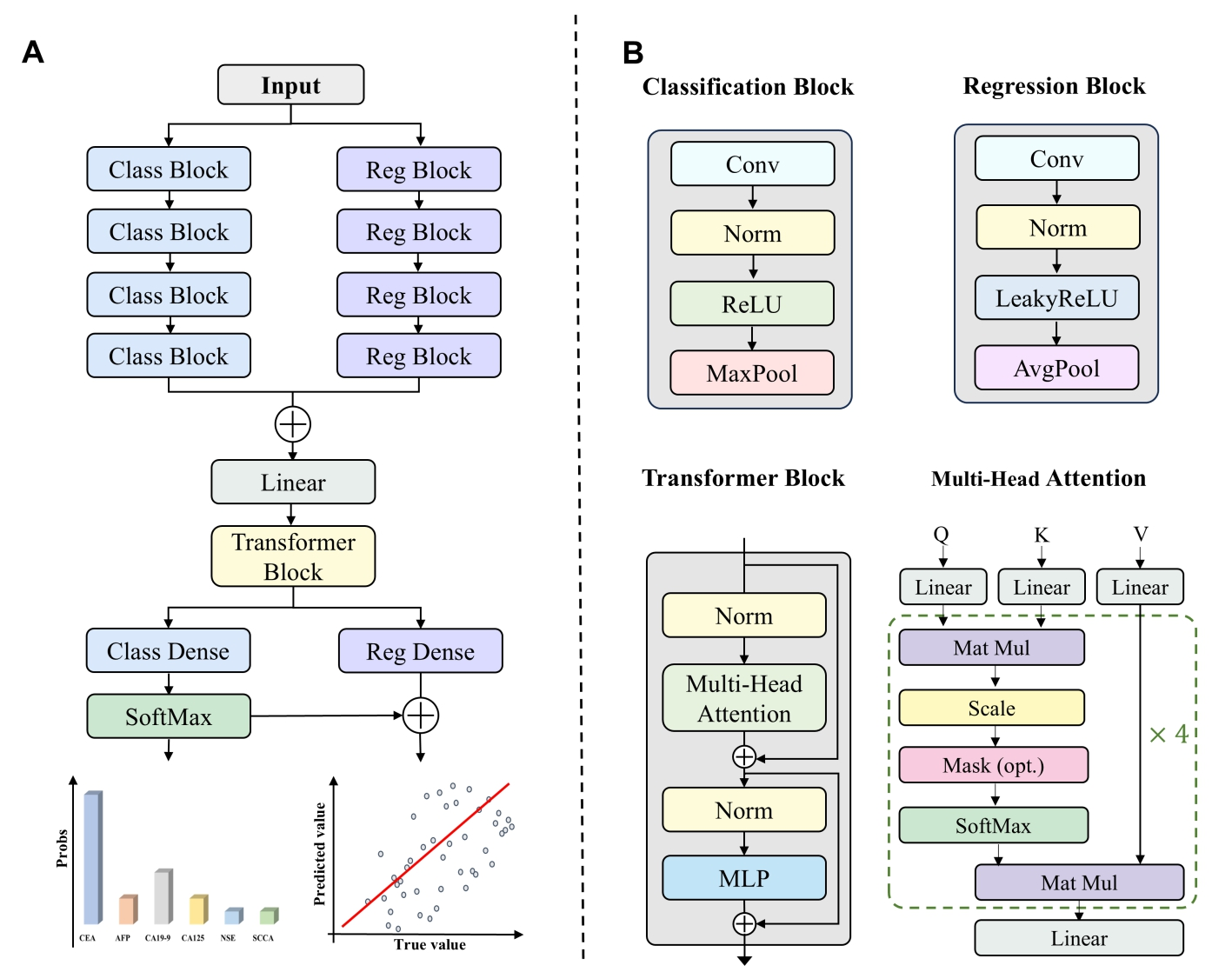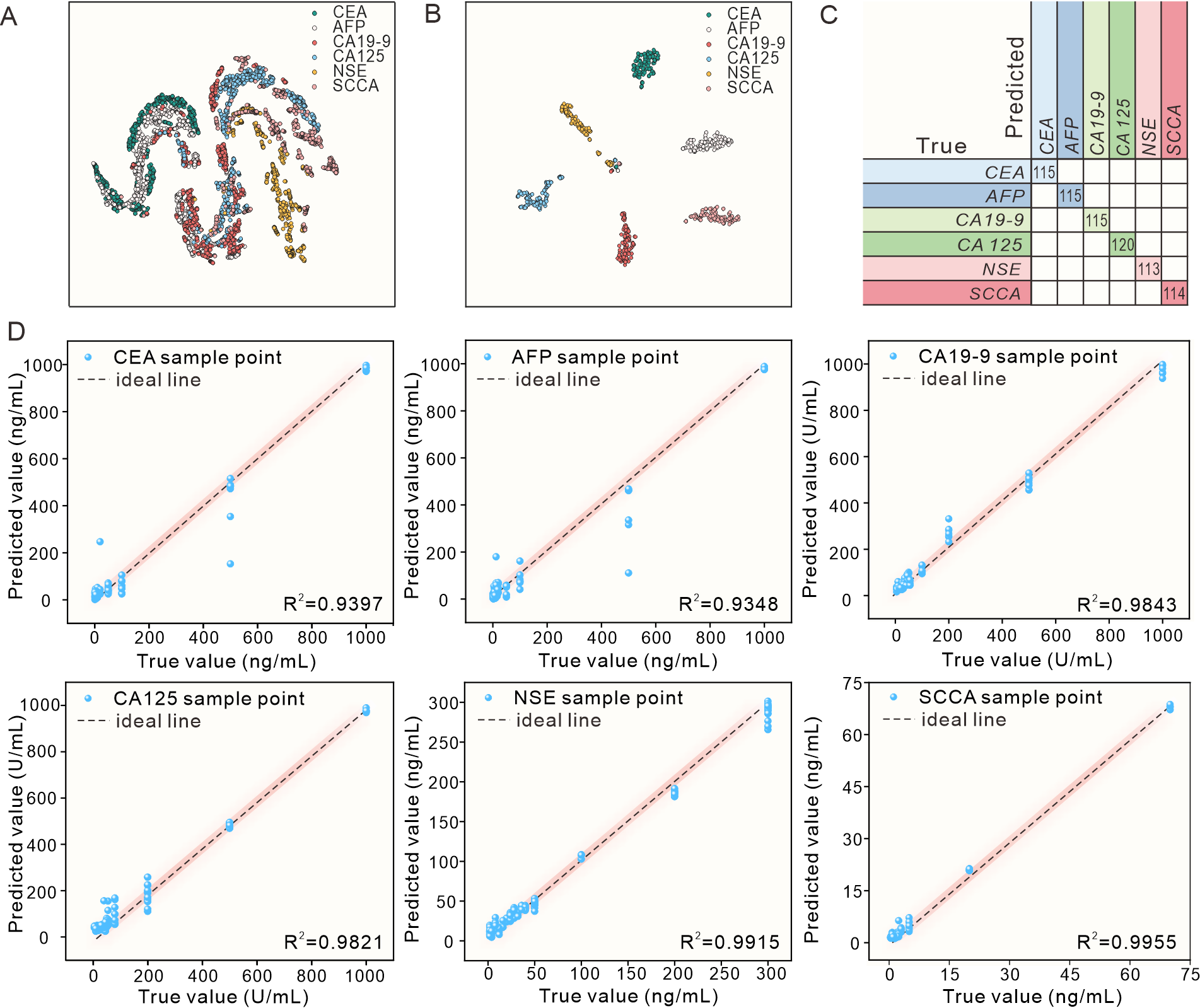A research team from the Hefei Institutes of Physical Science of the Chinese Academy of Sciences has recently combined label-free surface-enhanced Raman spectroscopy (SERS) with an attention scale fusion network (ASFN) deep learning model,achieving high-precision,label-free,qualitative,and quantitative simultaneous analysis of multiple tumor biomarkers in serum samples.
The study was recently published in Analytical Chemistry.
Serum tumor biomarker detection plays an important auxiliary role in early cancer screening. However,due to the complex composition of serum samples and the weak effective signals,traditional detection and analysis methods face significant challenges in both accuracy and quantification.
In this study, the team developed a multi-task deep learning architecture based on ASFN, incorporating multi-scale feature extraction, attention mechanisms, and task interaction modules. This design enables accurate differentiation and quantification of six common tumor biomarkers in complex serum SERS data: carcinoembryonic antigen (CEA), alpha-fetoprotein (AFP), carbohydrate antigen 19-9 (CA19-9), carbohydrate antigen 125 (CA125), neuron-specific enolase (NSE), and squamous cell carcinoma antigen (SCCA).
The ASFN model demonstrated outstanding performance, achieving 100% classification accuracy on an independent test set, a quantitative weighted R² of 0.9713, and an error margin as low as 1.7% of the target dynamic range. In addition, the use of Permutation Importance visualization highlighted critical Raman signal regions that drive both qualitative and quantitative biomarker identification. This not only improved the interpretability of the AI model but also provided valuable scientific evidence to support clinical applications.
This research provides a new approach for efficient and high-precision detection of serum tumor biomarkers,with promising applications in early cancer screening and precision medicine,offering new solutions for clinical diagnosis and health monitoring.
Article Link:https://pubs.acs.org/doi/10.1021/acs.analchem.5c03263

Figure. 1 Schematic of the ASFN multitasking model architecture and its key functional modules

Figure. 2 Classification and regression performance analysis of the ASFN model for serum tumor biomarkers














